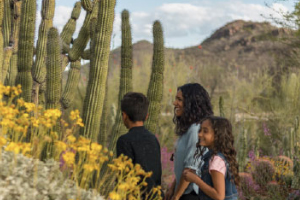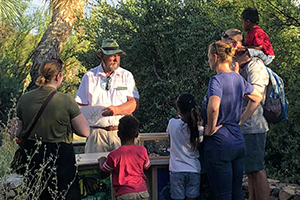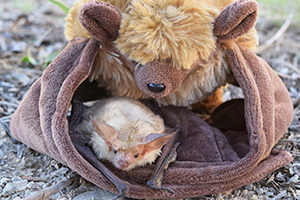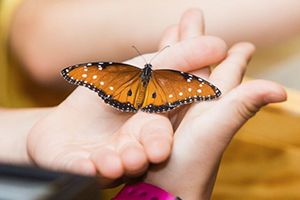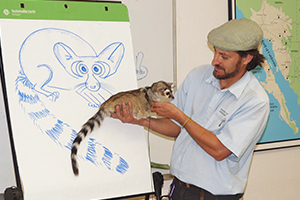Seed Dispersal
Imagine you're a cactus in the Sonoran Desert. The early summer, before the monsoon, is a harsh time. Your leaves are small or your stems waxy to prevent the desiccated air from sucking all of your moisture away. Your roots are spread as far as they can go, to capture every tiny droplet of moisture. And yet — just a few weeks ago — you created thick, fleshy fruit, oozing with delicious juice. You gave up your stores of water so you could make these beautiful fruits.
Why? In simple terms: because it was worth it. Those fruits represented the chance to attract a hungry animal that would take your seeds and move them to a new site. The seed disperser seeks cover and drops your seeds beneath an adult plant or in a burrow or crevice, where shade and moisture are elevated. This strategy offers your seeds the best possible chance to survive and to grow into a new generation.
Today, declining water tables, coupled with wildfires carried by invasive buffelgrass, reduce the number of adult plants available to provide cover. If disrupted seed dispersal leads to lower reproductive success of cacti and trees, there may be fewer individuals in the next generation. This can increase bare ground and erosion, eventually causing desertification. At the Arizona-Sonora Desert Museum, we are working to understand the dependency of desert plant communities on dispersal by wildlife.
Contact: Clare Aslan

